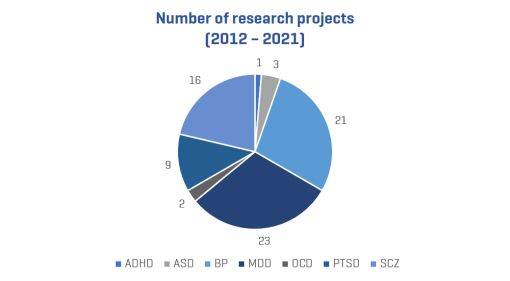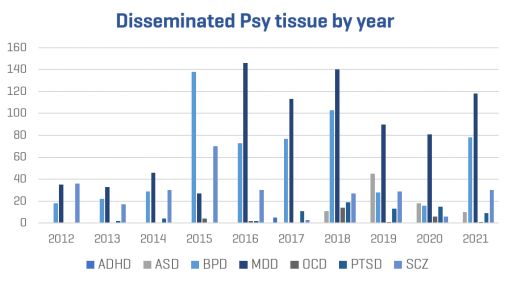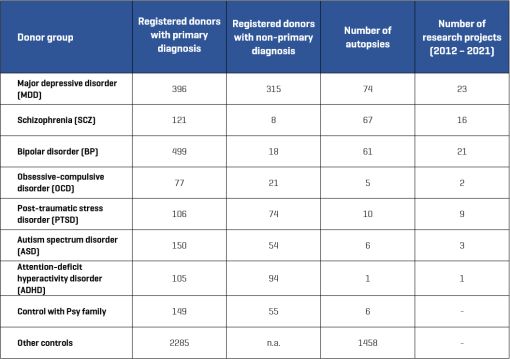Numbers and figures
Shown below are the number of NBB-Psy registrations, autopsies, projects and disseminated tissue, including psychiatric disorder and control donors. Overall NBB numbers can be found in our yearly progress reports.
Registrations
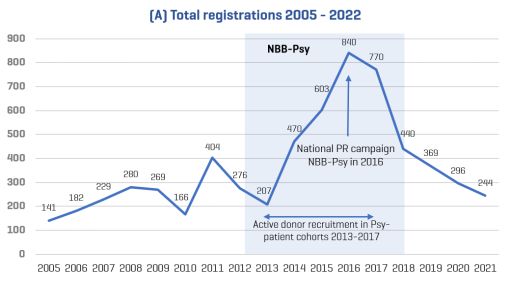 |
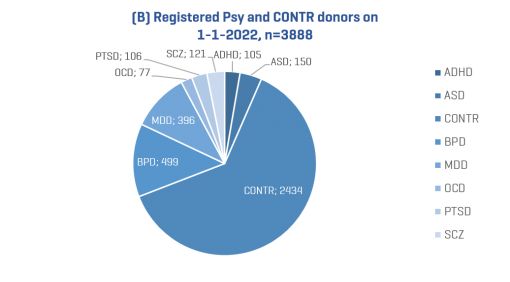 |
Figure 1. The NBB-Psy national donor campaign generated a surge of registrations (A) increasing the total number of registrations of donors with and without a psychiatric disorder (B). Numbers are from 1st January 2022 and based on clinical diagnosis during life.
The national donor campaign did boost the total number of donors registered with and without a psychiatric disorder, which has risen to a combined total of 3888. From all donors registered on the 1st January 2022, 27.5% has a psychiatric disorder, 26.4% has a neurodegenerative/neurological disorder and 46.1% are control donors suffering from neither of those disorders.
Autopsies
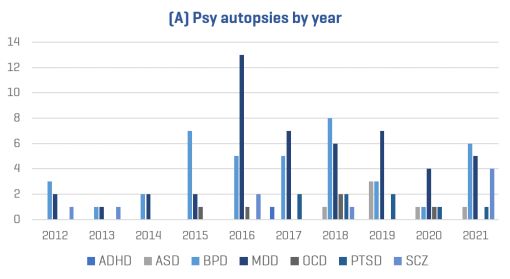 |
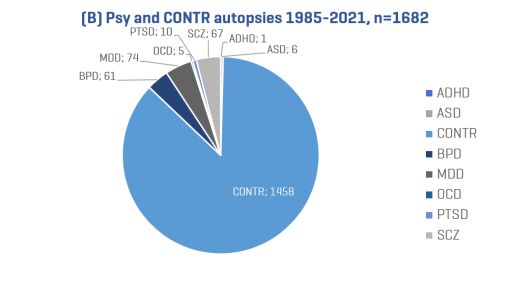 |
Figure 2. Autopsies of psychiatric donors shown by year (A). Cumulative total number of autopsies of donors with and without psychiatric disorders (B). Numbers are from 1st January 2022 and are based on the final postmortem diagnosis (including neuropathology) unless not known yet for recent cases (for these clinical diagnosis during life is used).
The increase in psychiatric donor registrations resulted in an increase in autopsies, particularly for MDD, BPD and SCZ patients (Fig 2A). We have a relatively large proportion of valuable control autopsies as part of the cumulative total number of NBB autopsies (Fig 2B) which are used for comparison with the patient groups.
Research projects and disseminated tissue
Along with the increase in Psy donor registrations and autopsies, the number of projects receiving tissue from Psy donors has also increased over the past few years.

